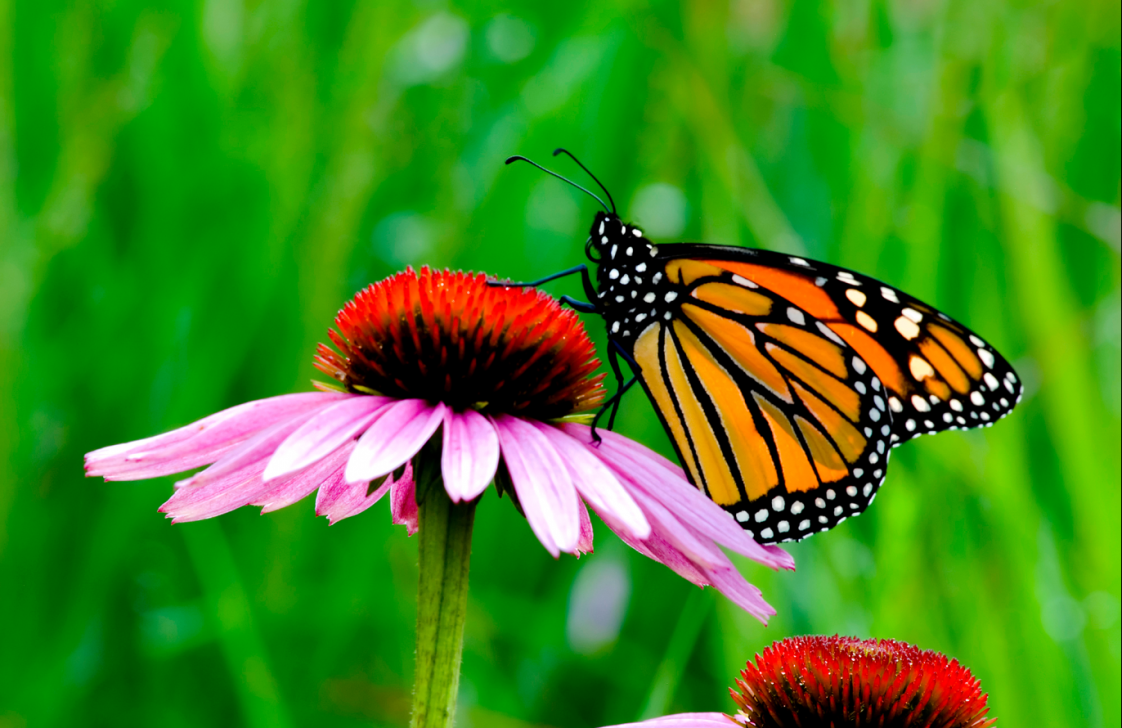Fish & Water

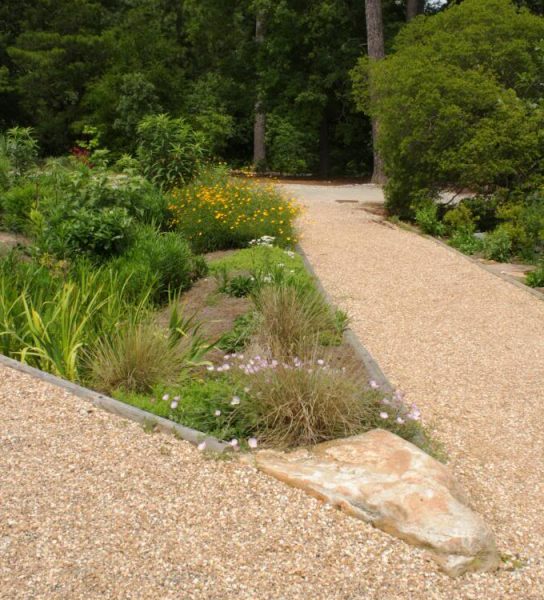
Figure 1. Donald E. Davis Arboretum rain garden between two paths
Objective: You will learn how to install a rain garden and why installing a rain garden has a positive impact on your environment.
This manual was created as part of the Alabama Watershed Stewards Program, an educational training developed by Alabama Extension in cooperation with the Alabama Department of Environmental Management, U S Environmental Protection Agency (EPA), Alabama Water Watch with the Auburn Water Resources Center, and other local and regional partners. The purpose of the Alabama Watershed Stewards Program is to promote healthy watersheds, increase understanding of potential causes of water pollution and resource degradation, and provide the knowledge and tools needed to prevent and resolve water quality problems.
What is a rain garden?
Rain gardens are part of stormwater management systems that are both beautiful and functional. Rain gardens are shallow, vegetated landscape depressions that slow water for a short time to provide stormwater infiltration, pollutant filtration, native plant habitat, and effective stormwater treatment for small-scale residential or commercial drainage areas.
Rain gardens come in various shapes and sizes and can be an attractive landscape feature if managed appropriately. They are considered part of green infrastructure and low-impact development (LID) initiatives in urban areas. If multiple rain gardens are spread out across a city, they can play a larger role in preventing polluted water runoff from entering rivers and streams.
Green infrastructure captures the rain where it falls. It mimics natural hydrological processes and uses natural elements such as soil and plants to turn rainfall into a resource instead of waste. Green infrastructure includes water management practices such as vegetated rooftops, roadside plantings, absorbent gardens, and other measures that capture, filter, and reduce stormwater pollution.
Why build a rain garden?
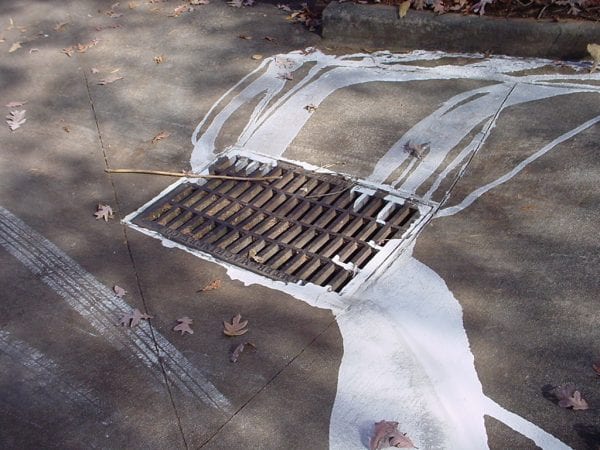
Figure 2. Paint is washed into a storm drain, depositing chemicals directly into local waterways.
When it rains, do you ever think about where that rainwater goes? Forested and urban environments respond differently to rain events. As our cities and neighborhoods increase development, more impervious surfaces (concrete, asphalt, rooftops) are covering what once was vegetated ground. Impervious surfaces and compacted soils prevent stormwater infiltration and cause runoff of pollutants, such as oil, grease, metals, and fertilizers, from our landscapes. These pollutants often run into storm drains, which then run directly into local rivers and streams. The result? Too much water flowing in a short amount of time, carrying pollutants that negatively affect the health of our streams, lakes, and estuaries.
Reducing runoff helps to restore a more stable, functional hydrologic cycle. You can learn more about water hydrology, watersheds, and water health in chapter 4 of the Alabama Watershed Stewards Handbook available at www.aces.edu.
Rain gardens provide the following benefits:
- Manage stormwater at its source
- Promote infiltration
- Decrease velocity of water flowing from impervious surfaces
- Reduce nutrients, heavy metals, sediment, and pathogens before water enters a storm drain
- Are cost effective (average $2.00 to $5.00 per square foot)
Did you know?
Because of impervious surfaces, such as pavement, rooftops, and roadways, a typical city block generates five times more runoff than a woodland area of the same size.
How much water does a storm deliver?
Have you ever wondered how much water falls onto your yard during a rainstorm? In Alabama, we receive an average of 56 inches per year. This means that an acre of land in Alabama will receive an average of 1,520,624 gallons of rain in a single year! That’s enough water to fill 380 tanker trucks and more than 50 swimming pools. These high volumes of water delivered through storm drains into a local waterway can cause flashy flows or extremely high flows during a rain event followed by low flows after the rain. This increases erosion, which supplies sediment to stream flows.
Evapotranspiration is the process by which water is transferred from the land to the atmosphere by evaporation from the soil and other surfaces and by transpiration from plants.
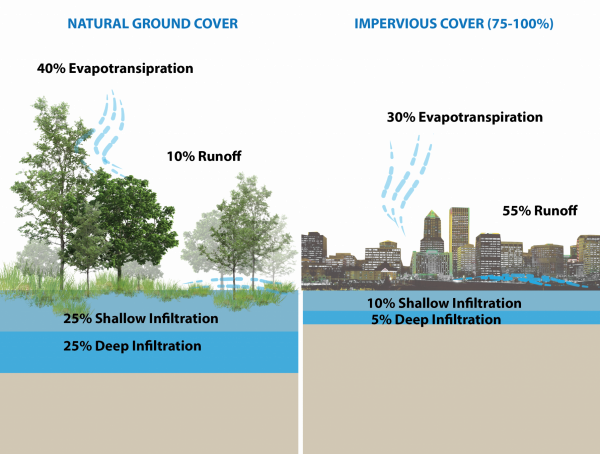
Figure 3. Stormwater runoff on natural vegetation versus stormwater runoff on urban impervious surfaces.
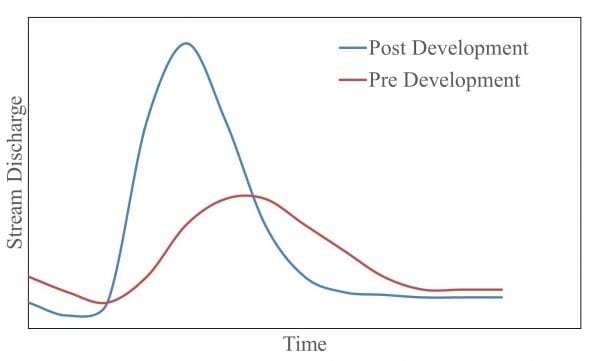
Figure 4. Stormwater runoff hydrograph example showing the difference in water discharge after a storm event on developed (urbanized) versus. undeveloped lands. Water flows are more spread out and less “flashy” if the land surface is more vegetated.
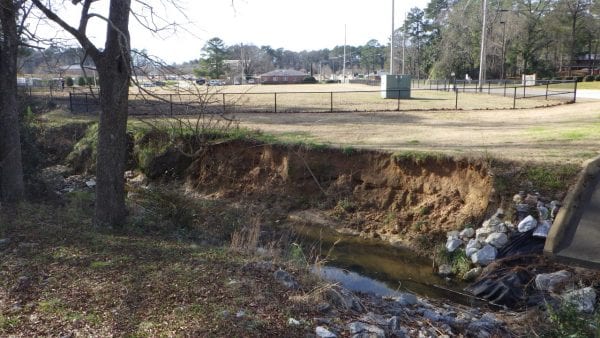
Figure 5. Flashy flows can cause severe erosion in urban streams.
Storm volume = area × rainfall
Ex 1: A 40 ft. × 70 ft. roof receives 1 in.
(40 ft. × 70 ft.) × 1 in. (1 ft. ÷ 12 in.)
2,800 ft.2 × 0.083 ft. = 232.4 ft.3
232.4 ft.3 × 7.48 gal./ft.3 = 1,738 gal.
Ex 2: An acre of land receives 0.5 in.
43,560 ft.2 × 0.5 in. (1 ft. ÷ 12 in.)
43,560 ft.2 × 0.042 ft. = 1,815 ft.3
1,815 ft.3 × 7.48 gal./ft.3 = 13,576 gal.
Alabama, a Unique Situation
Alabama is one of the most biodiverse places in the world because of its warm, moist climate, evolutionary past, and great geologic diversity. With more than 4,533 documented species, Alabama ranks fifth among states in overall species diversity and is first among states east of the Mississippi River. Keeping our waterways clean helps preserve this biodiversity.
Shortcut approximation equation:
Storm volume = square footage of area × inches of rain × 0.62
Revisiting the problems above:
Ex 1: 2,800 ft.2 × 1 × 0.62 ≈ 1,730 gal.
Ex 2: 43,560 ft.2 × 0.5 × 0.62 ≈ 13,500 gal.
What do rain gardens have to do with it? Rain gardens help us restore the natural water cycle in developed areas by encouraging stormwater infiltration. This helps improve stormwater quality and promotes healthy streams in both small towns and large cities.
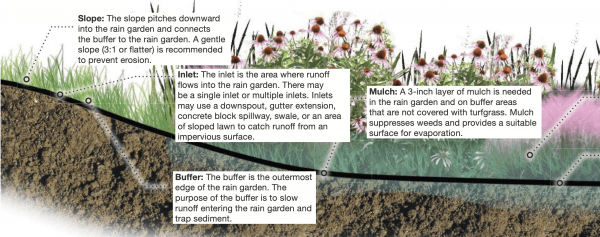
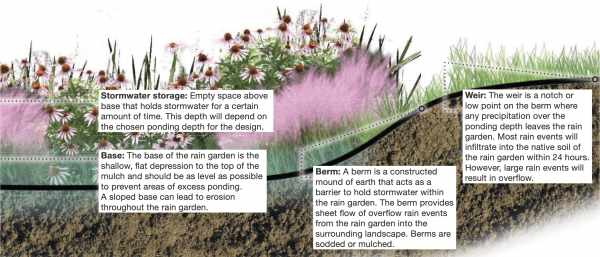
Figure 6. Design components of a rain garden.
Design Components of a Rain Garden
Slope: The slope pitches downward into the rain garden and connects the buffer to the rain garden. A gentle slope (3:1 or flatter) is recommended to prevent erosion.
Inlet: The inlet is the area where runoff flows into the rain garden. There may be a single inlet or multiple inlets. Inlets may use a downspout, gutter extension, concrete block spillway, swale, or an area of sloped lawn to catch runoff from an impervious surface.
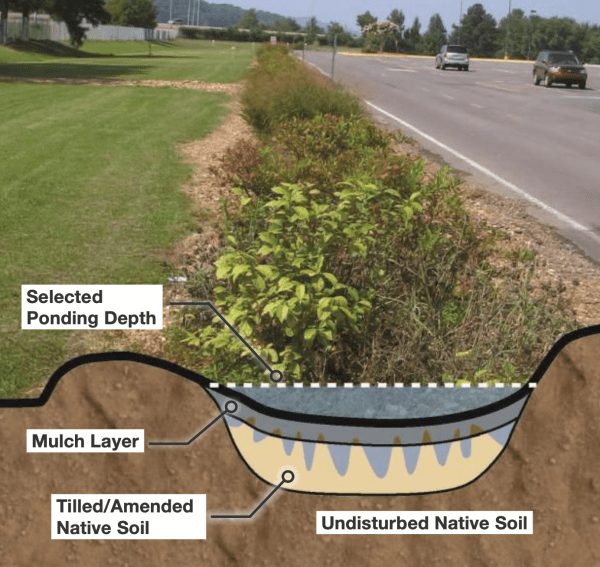
Figure 7. Rain gardens can be designed in various shapes and sizes. This image illustrates how rain gardens capture and infiltrate water running off impervious surfaces.
Mulch: A 3-inch layer of mulch is needed in the rain garden and on buffer areas that are not covered with turfgrass. Mulch suppresses weeds and provides a suitable surface for evaporation.
Buffer: The buffer is the outermost edge of the rain garden. The purpose of the buffer is to slow runoff entering the rain garden and trap sediment
Stormwater storage: Empty space above base that holds stormwater for a certain amount of time. This depth will depend on the chosen ponding depth for the design.
Base: The base of the rain garden is the shallow, flat depression to the top of the mulch and should be as level as possible to prevent areas of excess ponding. A sloped base can lead to erosion throughout the rain garden
Berm: A berm is a constructed mound of earth that acts as a barrier to hold stormwater within the rain garden. The berm provides sheet flow of overflow rain events from the rain garden into the surrounding landscape. Berms are sodded or mulched.
Weir: The weir is a notch or low point on the berm where any precipitation over the ponding depth leaves the rain garden. Most rain events will infiltrate into the native soil of the rain garden within 24 hours. However, large rain events will result in overflow.
Common Questions
Find a list of several common questions and answers about installing a rain garden here.
Building a Rain Garden: A Step-by-Step Approach
Rain gardens are relatively easy features to install in your landscape, but it is well worth considering all the steps and factors involved before beginning your own project.
Before starting, be sure you cover all your bases:
- Consider regulations, permits, and design modifications. Some cities and counties have specific regulations regarding disconnecting downspouts, routing or piping water off-site, and securing setbacks to structures, steep slopes, and property lines. They may also require a permit. Always check with your city’s building or planning department if you live within city limits; otherwise, check with your county government.
- Can you dig safely? Make sure you are not going to compromise any of your utilities by digging your rain garden. Alabama law requires that everyone, including homeowners, contact Alabama 811 at least 2 working days before the start of any excavation project (no matter how large or how small). If you are unsure whether you need to notify Alabama 811 before starting your job, it is always best to call first. Calling 811 is free; if you are calling from outside of Alabama, the toll-free number is 800-292-8525. You can also use their Internet web portal or mobile application.
Step 1: Observe and Map Your Site
Step 2: Determine the Location of the Rain Garden
Step 4: Determine the Size and Depth of the Rain Garden
Step 5: Construct the Rain Garden
Step 6: Choose the Right Time, Right Plant, Right Place
Step 7: Maintain Your Rain Garden
References
Find a list of the references used for this publication here.
 Laura Bell, Project Coordinator; Eve Brantley, Water Resources Specialist and Professor; Caitlin Sweeney, Assistant Coordinator; and Naomi Pitts, Assistant Coordinator, all with Alabama Extension Water Program at Auburn University
Laura Bell, Project Coordinator; Eve Brantley, Water Resources Specialist and Professor; Caitlin Sweeney, Assistant Coordinator; and Naomi Pitts, Assistant Coordinator, all with Alabama Extension Water Program at Auburn University
New May 2021, How to Install a Rain Garden, ANR-2768

